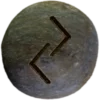Last Updated on March 1, 2025
Table of Contents


The Conflict
The Æsir-Vanir War (pronounced “EYE-seer, VAH-neer”) represents a pivotal conflict in Norse mythology. It began as a clash between two divine tribes: the Æsir (associated with sky, law, and order) and the Vanir (linked to fertility, nature, and prosperity). The gods of the Æsir include Odin (Óðinn, pronounced “OH-thin”) and Thor (Þórr, pronounced “THOR”), while the Vanir feature Njord (Njǫrðr, pronounced “NYOR-thr”), Freyr, and Freyja. This war symbolized the struggle between differing aspects of divine authority, which ultimately led to a unified pantheon. ![]()
The war began when the Vanir goddess Gullveig (“GOOL-vayg”) entered Asgard, the realm of the Æsir. Her love of wealth caused anger among the Æsir, who attempted to destroy her by fire. Despite repeated burnings, Gullveig survived and rebirthed herself. This sparked outrage among the Vanir, leading to a full-scale war. Both sides inflicted heavy losses, but neither achieved victory.
Eventually, a truce was called. To solidify peace, the two tribes exchanged hostages. The Vanir sent Njord and his children, Freyr and Freyja, to the Æsir. In return, the Æsir sent Hoenir (Hœnir, pronounced “HAY-neer”) and Mimir (Mímir, pronounced “MEE-meer”) to the Vanir. The exchange symbolized unity, but it also emphasized the deep mistrust that lingered.
The resolution of the war reshaped the Norse pantheon, merging Æsir and Vanir gods into a single, cooperative group. This union highlighted the interdependence of law, order, and prosperity. References to the Æsir-Vanir War appear in both the Poetic Edda and Prose Edda. These texts portray the conflict as both destructive and transformative, embodying the cyclical nature of conflict and harmony in the cosmos.
Runes Associated with the Æsir-Vanir War
The Tiwaz rune (ᛏ), representing the god Týr, embodies honor, justice, and the courage required during the war. Týr’s sacrifice of his hand in binding the wolf Fenrir parallels the sacrifices made by both tribes to achieve peace.
The Gebō rune (ᚷ), symbolizing gifts and exchanges, reflects the hostages exchanged between the Æsir and Vanir. This rune highlights the importance of balance and reciprocity in resolving conflicts. Both Elder Futhark runes illustrate the foundational values upheld during and after the war. ![]()
The War’s Importance to Asatru
To modern Asatruar, the Æsir-Vanir War represents the value of reconciliation after discord. It emphasizes the importance of finding unity amid division. The war’s resolution teaches lessons about trust, compromise, and enduring peace. Asatruar often view the war as a symbol of the necessity of balance between opposing forces. This conflict, deeply rooted in Norse lore, continues to inspire reflections on unity and harmony in the modern world.


